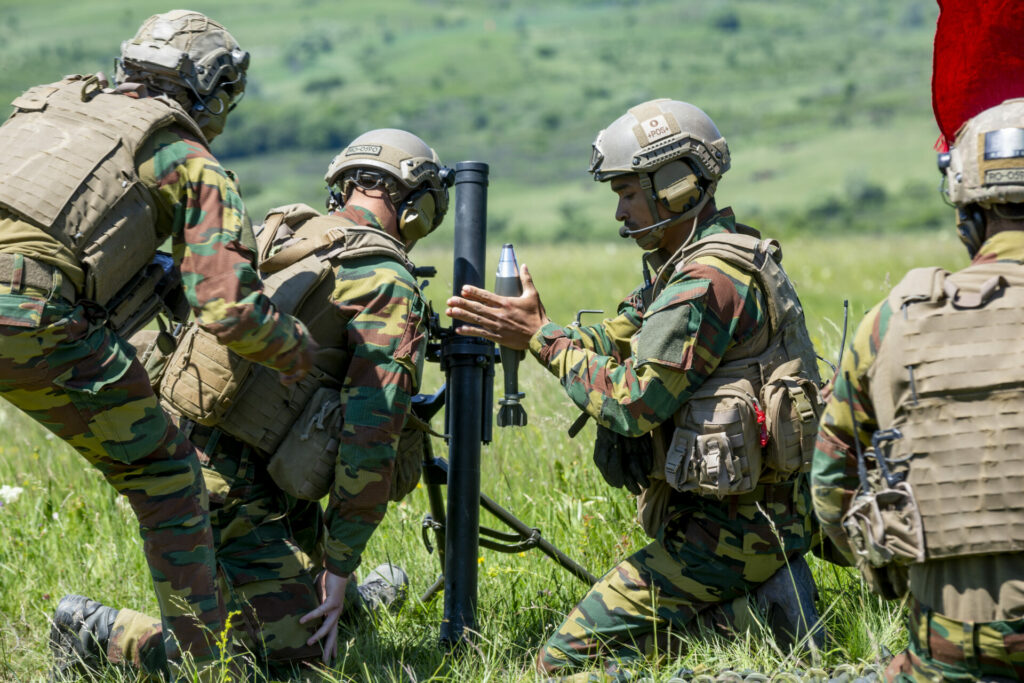NATO Secretary-General Jens Stoltenberg has announced that 18 Member States are expected to reach 2% GDP spending on defence in 2024, amid ongoing discussion about boosting military spending.
"This year, I expect 18 Allies to spend 2% of their GDP on defence,” Stoltenberg told reporters on Wednesday. "That is another record number. And a six-fold increase from 2014, when only 3 Allies met the target."
According to the NATO chief, European allies will invest a combined total of $380 billion for defence in 2024, which for the first time, amounts to 2% of their combined GDP.
"Since 2014, European Allies and Canada have added more than $600 billion for defence. Last year saw an unprecedented rise of 11% across European Allies and Canada," he said.
Stoltenberg also announced a planned rise in ammunition production too, stating that NATO have agreed contracts worth ten billion dollars.
Germany has launched construction for a new ammunition factory in Lower Saxony. At full capacity, it will produce around 200,000 artillery shells per year. Currently, NATO is undertaking its largest exercise in decades with approximately 90,000 forces from all 31 Allies and Sweden.
"This is a clear demonstration of our capabilities," Stoltenberg said. "NATO will continue to ensure that there is no room for miscalculation in Moscow about our readiness and resolve to protect all Allies."

Press Conference by NATO Secretary General Jens Stoltenberg on 14 February 2024. Credit: NATO
The announcement comes after US presidential hopeful Donald Trump’s brash warning that, if re-elected, he would "encourage" any potential Russian attacks against European NATO members for not paying their share in the military alliance.
Trump made similar claims while US President, which led many EU Member States, particularly France, in making calls for Europe to pursue a policy of strategic autonomy – in other words not rely on the United States for its military and defence policy.
Belgium second-lowest
An analysis by German research institute Ifo published in January, revealed how much Member States paid in 2024. The United States alone, which was not included in the calculation, accounts for 70% of NATO's total budget.
Of the 25 countries surveyed, only 10 met the required target. Poland leads the way with 3.9%, followed by Greece (3%) and Estonia (2.7 %). The other countries meeting the target are Finland, Hungary, Latvia, Lithuania, Romania, Slovakia and the United Kingdom. Finland, who is the newest NATO member, is immediately among the countries contributing the most.
Belgium is currently the second-lowest defence spender among NATO members, having spent 1.1% of its GDP on defence, beating only Luxembourg. In July last year, Belgian Prime Minister Alexander De Croo committed to a 2% GDP defence spending at the NATO summit in Madrid.

Prime Minister Alexander De Croo pictured during a head of states summit of the NATO (North Atlantic Treaty Organization) military alliance, Wednesday 12 July 2023 in Vilnius, Lithuania. Credit: Belga
However, he refrained from confirming a precise timeline for reaching this minimum objective, as requested by NATO for all its members by 2024. De Croo pledged the spending "within the next ten years".
In December, Belgian Defence Minister Ludivine Dedonder specified that Belgium will increase its defence spending to 1.24% of GDP this year.
In 2014, NATO leaders agreed to commit 2% of their national Gross Domestic Product (GDP) to defence spending, to help ensure the Alliance's continued military readiness, taken in response to Russia’s illegal annexation of Crimea that year, and amid broader instability in the Middle East.

